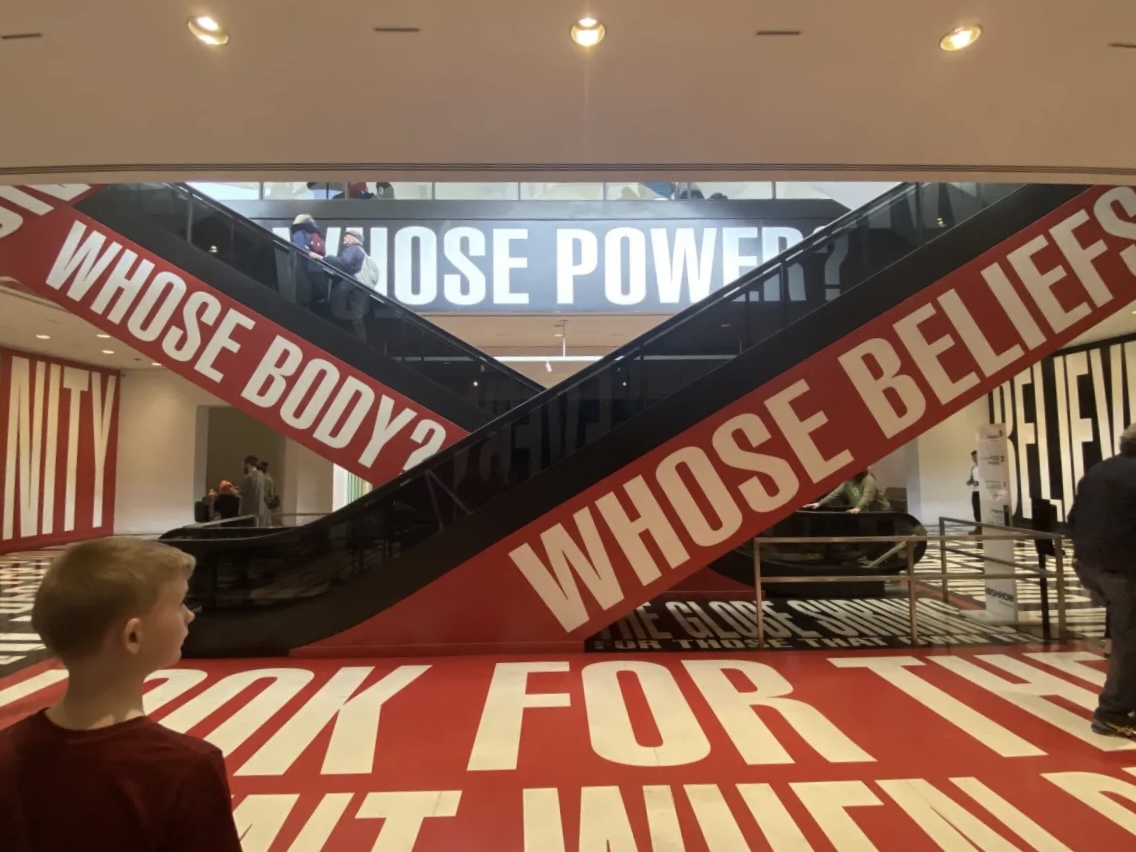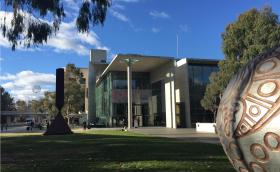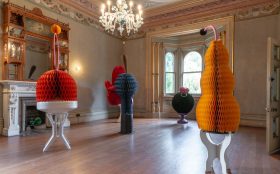Washington DC is in many ways like Canberra, being the political capital, defined by large boulevards, well-planned and art centric. In the same breath, it is nothing at all like Canberra, being of such scale and might as to dwarf all conceptions of what a capital city should be.
The upside of this is an amalgamation of art and artefact collections of absolute gravitas. Fuelling this is the fact that each of the museum directors is an exemplar of directional foresight with the ability to draw from the best collections in the world. Moreover, the Australian connection is robust with artists, directors and curators helping to define the nature of art on this very large world stage. The exhibitions range from blockbuster to intimate, with academic curation underpinning even the smallest and most obscure of shows. That said, any exhibition in Washington DC, is likely to be seen by several million viewers, so perhaps obscurity is moot.

National Gallery of Art
Admission is always free, declares the website with a real feeling of triumph. And proud it should be with extraordinary exhibitions open to 3.8 million in 2023 and an expected increase now that the world has embraced a post-COVID travel bug. This year, while Paris hosted a huge Rothko exhibition to much fanfare, the National quietly showed Mark Rothko: Paintings on Paper in the East Building Mezzanine and Upper Level. To give context, these exhibition spaces combined, comprise around 500 square metres of the 10 hectares of exhibition space in the overall Gallery.
Read: Around the world in seven galleries
The Rothko work ranged from the brightly clashing red/orange, blue/green to the peach and umber, and all displayed directly on the walls with no barrier between art and viewer – sublime! Also exhibited this year is Woven Histories: Textiles and Modern Abstraction in the East Building, Concourse Galleries, arguably the best textile exhibition of the year with curation by Lynne Cooke, pairing work from Anni Albers with the extraordinary Liz Collins. The Australian born Cooke was Artistic Director of the 10th Biennale of Sydney, 1994–1996 and is now Senior Curator of Special Projects in Modern Art with the National Gallery.

Hirshhorn Museum
The Hirshhorn is unabashedly modern with its round architectural form designed by Gordon Bunshaft openly declaring its position. Conversely the Sculpture Garden has been somewhat hidden, despite boasting crowd favourites such as Yayoi Kusama’s Pumpkin. That, however, is about to change with a revitalisation and a new sculpture garden designed by Japanese artist and architect, Hiroshi Sugimoto, currently underway.
The exhibitions are modern to contemporary with a central round corridor for in situ works. The current work, Mark Bradford: Pickett’s Charge, reconceptualises French artist Paul Philippoteaux’s 19th century cyclorama depicting the final charge of the Battle of Gettysburg. For his work Bradford has used reproductions of Philippoteaux’s work as the medium for his torn and scrapped panorama, which eloquently asks if this is not also the cusp of political unrest.
Read: Postcard from Shanghai
Off this central area are exhibition spaces with fabulous installations including a Laurie Anderson piece (Four Talks) upstairs and a Barbara Kruger work (Belief + Doubt) down stairs, plus curated exhibitions drawn from the collection. Both the Director, Melissa Chiu, and Assistant Director, Aaron Seeto, are Australian and highly regarded for their stewardship of 4A Centre for Australian Asia art as Directors, 1996-2001 and 2007-2015 respectively.

The Australian Embassy
If you are lucky enough to be invited to an Australian Embassy event you will be privy to an exceptional collection of contemporary Australian artworks. Entirely fitted out in Australian blackbutt timber and featuring a who’s who of Australian designers from Adam Goodrum to Ross Gardam, the Bates Smart architecture is astoundingly good. Moreover, it includes a purpose-built gallery exhibition space that boasts a constant rotation of curated exhibitions drawn from the Embassy collection. The art collection itself has recently expanded with new work commissioned from Janet Fieldhouse, Nabilah Nordin, Sonja Carmichael and Elisa Jane Carmichael, Dr Abdullah M I Syed, Patju Presley and Callum Morton. Both the Nordin and Morton sculptures are outside the building in recessed courtyards with public access, so even if not invited inside, you are welcome to enjoy the work.

National Museum of Women in the Arts
Consider this: over the past decade, just 11% of all acquisitions and 14% of exhibitions at the main US museums were of work by female artists. As such, with 100% of its collection by women, this Museum is exceptional. National by name, but international in its outlook, the collection holds artists from around the world. From Australia there is excellent work by a considered range of artists including Petrina Hicks, Angelina Ngale and Patricia Piccinini. In no way a soft landing, the Museum curation is robust and academic with exhibitions drawn together across themes of strength, rights and reform. The Museum itself is intimate with easily navigated exhibition spaces and one of the best art libraries imaginable. Designed to be open forum, the library has books on all the artists in the collection. And they’re all available to everyone, even the precious volumes that may require a request and time in the climate-controlled booths.
The author visited Washington DC as a guest of Destination DC.






